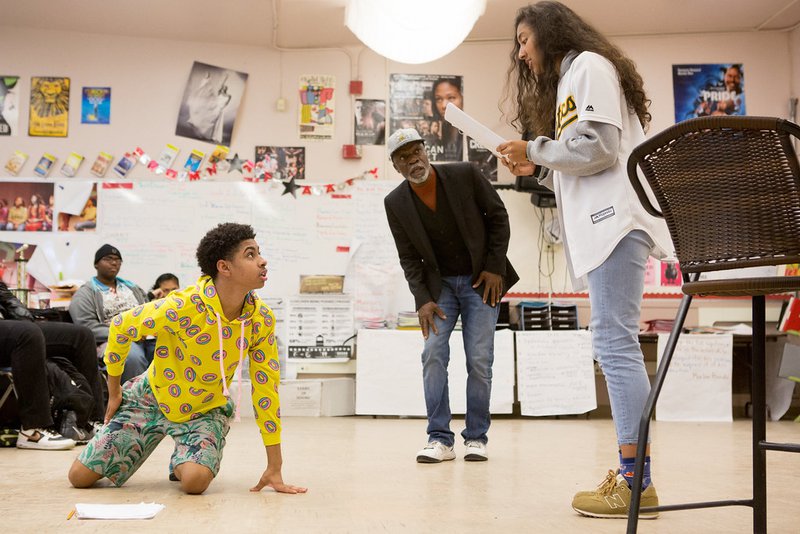
In this Williams College financial aid guide, CollegeAdvisor.com Admissions Expert Nadiya walks us through how she paid for college with the help of financial aid. For more guidance on financial aid and the college application process in general, sign up for a monthly plan to work with an admissions coach 1-on-1.
A Little Bit About Me
I applied to nineteen colleges. Yes, nineteen. Was my first-generation Russian heart overly zealous? Yes. Did I end up spending my entire winter break writing essays instead of enjoying the snow? Yes. Do I recommend this? No.
As someone from an immigrant family with little money saved for college, I was anxious about the college application process. By applying to a wide variety of programs, I hoped to maximize my chances of not simply getting into a top university, but one that I could actually afford.
This is an overview of my experiences with college finances. Before diving into the details of my process, I want to reiterate that every student has a different financial situation. What worked for me may not work for you. Stay open, discuss the possibilities with your parent(s), and try to plan for the future both during and after college.
In this article, I hope to give you a closer look at how financial aid at Williams College functions. I also aim to provide advice to keep in mind when embarking on your own college applications process.
Before Williams College: saving up in high school and applying to college
I’m from San Diego, California, so when I began to apply to colleges, the UC public school system was at the top of my list. Although my heart was always with Williams (or another small, East Coast liberal arts college), I knew that my family likely could not afford a private institution. On top of that, I was (and still am) planning on going into directing for the theatre, which, as we all know, isn’t the most lucrative profession.
I would recommend that all high school seniors speak to their counselors or career center staff. There are an incredible number of local scholarship opportunities that most students neglect, so don’t just focus all your energy on the more prestigious national programs. Although these awards are often no more than $2000, they have relatively small applicant pools. These small awards can add up to make a significant dent in tuition.
Affordable Extracurriculars
I spent my four years at Canyon Crest Academy, a well-funded public school. Due to the wealth of the surrounding area, Canyon had similar opportunities to those of a private high school. As a result, I was able to take part in activities such as theater with no cost to my family.
Throughout high school, I was lucky to not have to work a job during the school year. This gave me time to pursue a few intense, time-consuming extracurriculars, including theatre, singing, circus, and volunteering. Though these activities basically ensured that I’d have a 2 am to 6 am sleep schedule, they were well worth it.
Often, high school students believe that they must participate in expensive programs in order to succeed in college applications. This is absolutely not the case. Engaging with your community can be a great way to show your interests and talents to admissions officers. If you are struggling financially, just remember that how you connect with those around you is the most important part of your application. Opportunities for leadership and interpersonal connection can be found at a job, at your high school, or even at home.
Summer jobs
During the summer after sophomore year, I took my first job at our local standardized test preparation and college admissions company. Throughout the summer, I spent three days a week studying for the SAT and the rest of the week in the office, grading tests and working through the database.
My relationship with this company became vital to my financial stability and my college applications process. I returned the following summer, this time as a student worker and assistant SAT tutor in Writing and English. Meanwhile, the staff helped me with my own college applications.
Later on, I got my first job as a college admissions advisor in part due to my experience with this company. This has provided a stable and flexible income for me throughout my college years. This side job also provided me the comfort to pursue unpaid opportunities, like internships. More on that later.
Budgeting in high school
I encourage you to spend time learning about basic savings accounts, budgeting techniques, and the financial aid process. Have open conversations about affording college with your family. Make sure you understand how much your guardian(s) expect to contribute. Additionally, think about what you can personally put towards your education before senior year. This will give you time to adjust your expectations and figure out which steps to take before beginning the application process.

College Applications; Applying to Williams
One thing I certainly did not anticipate was simply how expensive the applications process can be as a whole. From flying to interviews to paying application fees, the act of applying (and, in my case, auditioning) was itself a significant investment.
Building a School List: Do your research
What career do you hope to pursue? How quickly will you be able to pay back loans? Are you willing to take on debt for the benefits of a private school? These are all important considerations to take into account when applying for college. Going into debt over the prestige of a school may not be worthwhile. There are many less expensive programs that can provide you with financial support while giving you a great education.
Universities always have a reputation around how they treat financial aid students. As you build your list, make sure to speak to students who are currently enrolled at your schools of interest. How do they provide support to the student body, especially during the pandemic? Are they known for giving a generous scholarship in the first year, but not extending it for all four?
Apply to schools that you can see yourself from a financial perspective as well as an academic one. Many students have their hearts broken when their dream schools refuse to increase financial support or only do it for the first year. Apply to a variety of programs, and do your research.
Need-blind colleges
All of my schools were “need-blind.” This means that, for domestic students, financial need does not factor into the admissions decision. I strongly recommend that all of my students double check if the colleges on their list are need-blind. It never hurts to apply for aid. If you feel that you are almost eligible for financial aid or an application fee waiver, ask. Apply. The worst that can occur is the college says no, and it will have no impact on your application.
Should you apply early decision?
Early decision simply wasn’t a viable option for me. ED applicants are expected to commit upon acceptance: the only case in which this contract can be broken is if the financial aid isn’t sufficient. But even that is considered inadvisable. Students are encouraged to try out the financial aid calculator on each college’s website. Still, I didn’t feel comfortable committing to a university when there was the chance of receiving a scholarship or a better offer from a different school.
FAFSA and the Financial Aid Application
The financial aid application process can be long, frustrating, and time-consuming. Make sure to budget time to fill everything out. I had to make sure that all documentation was in place, acting as the interlocutor between my family and the form. I recommend that you begin gathering documents (tax returns, W-2’s, etc.) ahead of time. This will keep you from frantically turning over the house in search for a minor paper right before the deadline.
Because financial aid information is sensitive and requires much archival work, tell your parents which documents you will require at least a month in advance and make sure to discuss exactly why. In some families, like mine, the parents take the lead in filling out the paperwork. Your parents, however, may entrust you with the forms. Keep your family in the loop at each step.
In particular, Williams College requires:
- The FAFSA (Free Application for Federal Student Aid)
- The CSS Profile, a more in-depth version of the FAFSA
- The IDOC (Institutional Documentation Service)
- Another CollegeBoard application that gathers documentation of your information.
I’ve applied to financial aid every year at Williams, so I’ve had to force myself to save all documentation of any work I do. I’ve also built up a very impressively adult-like document organizer. I promise that you won’t remember the exact income you received from your summer in a year or the password to your IDOC. Keep track of everything — it will come in handy.
Paying for interviews and flights
I decided to apply for a variety of programs: some of them B.F.A.’s, some conservatory-style B.A.’s, and some liberal arts programs. If you are interested in going into the arts, you can choose to either go into a career-specific, intensive program (B.F.A) or pursue a more relaxed and flexible major (B.A.).
B.F.A.’s, and some B.A.’s, are a significantly larger investment of time and finances during the applications process. I was offered interviews at UCLA and the University of Michigan, both highly-regarded theatre programs. Since I had to interview in person, I needed to buy plane tickets. At times, colleges will cover travel due to financial need or merit. For my family, though, the cost was out of pocket. This included not only the plane ticket, but also housing, meals, and transportation.
If you are applying to a number of such programs, determine your exact budget and the location of each school, as well as when they typically have their interviews. This will help you avoid a situation in which you are unable to travel to a top-choice school.

College Decisions
When college acceptances started coming in, I began to investigate renegotiation of financial aid packages and scholarships. I didn’t bother with some schools, knowing the costs were too high to ever bring them down to an affordable level. InterArts at the University of Michigan, for instance, was one of my favorite programs, but with the out-of-state cost and no financial aid, there wasn’t a world in which I could see myself committing.
With a scholarship, the least expensive school on my list was Kenyon College, a lovely liberal arts college in Ohio. Kenyon generously included a free flight to visit campus in their acceptance package. While I loved my campus visit, I felt like the community was a bit too small for me. The next least expensive were the UCs.
Williams was somewhere in the middle — much more affordable than Dartmouth or UMich.
Choosing Williams College
Williams was my number one choice throughout the admissions process. I somehow managed to convince my mom to attend Previews “just to check it out” at the end of our Theatre Department’s performance in NYC. My mother went from shutting down Williams, citing the affordability and prestige of UCLA’s TFT, to falling in love with the campus alongside me as we strolled around beneath the spring foliage and met faculty members in glassy Shapiro Hall.
Even after that, committing to $16,000 dollars worth of loans and a parent contribution that just met my mother’s criteria – “If it goes any higher, you’ll have to cover it” – was no easy decision. I was left attempting basic cost-benefit analysis, thanks to my AP Macroeconomics class.

Attending Williams College: Financial Aid, Work Study, and More Opportunities
Tuition at Williams for the 2019-2020 school year was $57,280. After the average financial aid, it lowered to $15,838. The school caps all subsidized student loans at $4000 a year. This means that a majority of Williams students on financial aid graduate with a debt of $16,000.
This isn’t to say the college will subsidize every loan you take out. After reviewing your information, your financial aid officer estimates a package according to their metrics. This shows you how much you and your parents should be able to contribute including the subsidized loans. If you or your parents find the cost too high, you can renegotiate the package with updated circumstances. If the appeal is rejected, however, you will need to take out unsubsidized loans.
Subsidized loans do not have an accruing interest rate while you are in school — the U.S. government covers that for you until you graduate. Unsubsidized loans, by contrast, immediately begin growing with interest.
My financial aid package
Despite their detailed nature, financial aid forms don’t always show the full details of each student’s situation. When I first received my financial aid package, it almost stretched my parents too far. I worked with the office to negotiate my package with additional information regarding my family’s situation. My appeal was successful. The office reassured me that throughout my four years at the college, they would be glad to reevaluate any packages with changes in my family’s financial situation.
Technically speaking, the Williams College price includes all costs. Food, living expenses, tickets, etc. are all included underneath the student contribution (work study and loans). The college expects you not to spend anything outside of these estimated figures on things pertaining to your campus life. My freshman year, I thought that these fees were separate, an additional fee on top of my expected contribution, which caused me to miscalculate a few times. As my counselor stated, “You can increase your loans if you expect to spend more than we estimate you need.” The college basically drafts a budget for you, orienting aid around it to ensure that you have the financial support you need.

Work Study at Williams College
Williams College has an incredibly robust work study program, with hundreds of opportunities at around eight hours a week. Some jobs, like working at the library, prioritize financial aid students first; others you find through departments; still more are open to all students.
I had worked in college admissions advising since high school, and I have continued to do so throughout my time at Williams. Still, I applied to jobs on campus simply because they interested me. I did everything from supporting 1st Grade and Kindergarten teachers at the local elementary school to translating Russian corporation charters for the Department of Economics.
Financial Support for Unpaid Opportunities
Williams strives to financially support unpaid opportunities for their students. For example, the ASIP grant offers $3800 for unpaid summer internships. Additionally, programs like the Career Center offer budgets to cover costs students don’t always anticipate, like purchasing a suit for the Career Fair.
The Office of Financial Aid continually updates its policies, too. As of recently, all financial aid students have insurance included under their package. And all financial students are allowed to waive one summer’s student contribution to take on internships, travel, and generally have the chance to spend time without the pressures of academic or work.
In my experience, the college has done an incredible job of eliminating hidden fees on campus — these are basically additional costs universities incur (like lab fees, tickets to campus events, etc.). All college-hosted events cost no more than three dollars. I’ve listened to Brian Stevenson lecture, watched Dada Masilo’s Giselle, participated in workshops with professional guest artists and academics like Jessica Hecht and Steven Pinker, all for free.
I take quite a few classes in the arts that require lab materials, and the college waives all such fees for financial aid students. And of course, there is the famed Book Grant, in which the school covers all course materials for students on financial aid. This doesn’t mean that you are borrowing from the college — you actually get to keep the books. When I’m on campus, I don’t even typically focus on day-to-day budgeting, as my only recurring expense is coffee on Spring Street (at our single coffee shop).
Budgeting
In order to track my expenses (and procrastinate on school work), I did some research into apps that break down the budgeting process. As mentioned previously, financial literacy is a weakness for me. I wasn’t sure where to start, so I download Mint, a free app that connects to your bank account and keeps track of your cash flow per month. I use it to set goals and limits on what I can spend, and it has proven immensely useful.
Estimated student contribution to Williams tuition includes living expenses outside of room and board, as well as travel. Make sure to book tickets for traveling to and from campus early to lower the cost. I plan out my approximate spending per month and check it against my average income to make sure it’s not dipping into additional loans (all of mine go towards lowering parent contribution, so I cannot rely on them for personal expenses).

Looking Back
The decision
Choosing to go to Williams was an incredibly difficult decision for me. Since I was accepted into UCLA with in-state tuition, it seemed frivolous to choose an education that was not only more expensive for my family, but one that would put me into debt, especially while I pursued the performing arts. My decision is definitely not for everyone: I have yet to graduate and fully absorb the impact of my debt. Though Williams has rather generous aid which made it affordable, “affordable” doesn’t mean without consequence.
I knew that with the alumni network, small class sizes, and paid opportunities the college offers, I would be able to be a part of a community that supports students in finding work and getting the personalized experience they need. Knowing my learning style, I decided I wouldn’t do well in an environment like a public school, especially when many classes are application-based.
Williams’ loans ended up feeling like a trade-off for the offerings I wouldn’t get at a UC program. Additionally, I was only 96 percent sure of my major. Committing to a career-oriented major would only have hindered my love for theatre and my commitment to cross-disciplinary work.
Would I have gone and been perfectly at peace with UCLA? Probably. College is, after all, what you make of it more so than the school itself. Do I have any regrets about choosing Williams? After an all-expenses-paid trip to Russia with my Senior Seminar class, absolutely not.
Final Thoughts
I’ve loved my time at Williams, from climbing Stone Hill to the apple cider donuts in the cafeteria in the fall to the incredible support of faculty and the Career Center staff in preparing me for life after university. Finances have certainly figured prominently for me, and it would be dishonest to say that I haven’t spent more than a few nights worrying about it.
The college does truly invest in its students, making opportunities accessible that I wouldn’t have been able to afford otherwise. The Office of Financial Aid has always been patient and flexible with me, despite my lack of financial knowledge. Of course, everyone will have their own individual experience. However, for me, after nights in Sawyer Library and time spent throwing snowballs on the quad and shared green beans at 1 am with other sleep deprived students, Williams has become my second home.
Now, if you’ll excuse me, I need to go submit my IDOC for my last year in the Purple Valley.

This informational essay was written by Nadiya Atkinson, Williams ‘21. If you want to get help writing your Williams application essays from Nadiya or other CollegeAdvisor.com Admissions Experts, register with CollegeAdvisor.com today.
